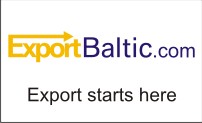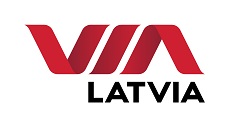Banks, Financial Services, Latvia
International Internet Magazine. Baltic States news & analytics
Tuesday, 20.05.2025, 07:13
Swedbank Latvia net result for Q4 was loss of LVL 19 mln
 Print version
Print versionAccording to the analysts, Latvian economy will hit the bottom around middle of this year after which growth will resume. The speed and sustainability of recovery will depend on continuation of reforms in the public administration and in business. This year is extremely important because it is a chance for Latvia to lay the foundation for a sustainable and balanced growth.
Summary of the result 2009
 |
|---|
Operational profit of Swedbank Latvia amounted to LVL 17m before provisions in Q4. Swedbank Latvia net result for the period was loss of LVL 19m, mainly due to an increase in impairment losses, but also lower income due to the contracting economy, informed BC press service of the bank.
Revenue from core activities were LVL 35m during the 4th quarter, which represents a quarter-on-quarter decrease of 14%. Operating expenses during this period were LVL 18m, which represents a 12% decrease on the previous quarter.
Client deposits increased by 6% during the 4th quarter, while the net loan portfolio declined by 4%.
“Last year was a test of strength for the entire economy of our country – the ability to make tough decisions, to restructure operations and to adapt to the new conditions. Swedbank did a lot to become more efficient and cut its costs, bolster the bank’s key indicators and develop new solutions to meet the current needs of customers” says Māris Mančinskis, the Head of Swedbank Latvia. “The last year came with new knowledge, experience and skills. This year must be used to build the future. The bank’s main focus is on customers, development of most relevant solutions in every situation of life and shaping relationships with a long-term perspective.”
Swedbank Latvia volumes
During 2009 more focus was given to increase of local funding. As a result, deposits increased by 6%. During this period, Swedbank continued to actively educate clients about the significance of savings, as well as constantly improving deposit product offers to customers, holding special campaigns, appreciating relationships with customers and their loyalty. As a result, Swedbank strengthened its market share in Latvia – 15.4% of all deposits.
Lending volume decreased by 4% during the period, which is a result of a combination of higher provisions and reduced new lending. Net lending volumes will continue to fall in 2010 as a result of post-growth trend of deleveraging.
Revenues of Swedbank in Latvia
Throughout a year revenues were impacted by a combination of higher provisions, low money market rates and lower lending volumes. The increase in non-performing loans is the second largest reason for the net interest income decline. As the bank has more Euribor-linked assets than liabilities, a reduction in Euribor affected net interest income adversely as well.
Credit quality of Swedbank
Impaired loans, gross, were LVL 924m on 31 December 2009 (LVL 147m on 31 December 2008). There was steep growth during first half of 2009 that levelled off towards the year-end. The real estate and construction sectors have been driving growth.
During second half of the year private sector loan losses increased along with unemployment levels. The share of impaired loans, gross, was 22.7% in Latvia. The Baltic Restructuring and Recovery unit (BFR&R) achieved the set objective for 2009 to review distressed large corporates loan portfolio, including full risk assessment with the delivery of individual restructuring plans for the majority of the clients. In the fourth quarter Swedbank transferred collateral to Ektornet AB, which will manage it during the recession.
Expenses of Swedbank
Expenses decreased by 12% during the 4th quarter. In 2009, the Swedbank took serious steps towards cost reduction in order to adjust the organization to the contracted economic activity in order to be a flexible, efficient and strong partner for our customers. Detailed action plans with specific targets to increase operational efficiency, maximise procurement efficiencies and limit benefits have been implemented. At the same time the economic downturn and the increase in problem loans raised expenses related to loan restructurings and recovery. These expenses are considered cyclical and will diminish as workout solutions are implemented and the economy recovers.
To adapt to smaller business volumes and lower economic activity the number of employees in Latvia was reduced by 25% during the year, and the number of branches was reduced by 18%.
The cost/income ratio was 43.9% in 2009.








 «The Baltic Course» Is Sold and Stays in Business!
«The Baltic Course» Is Sold and Stays in Business!

